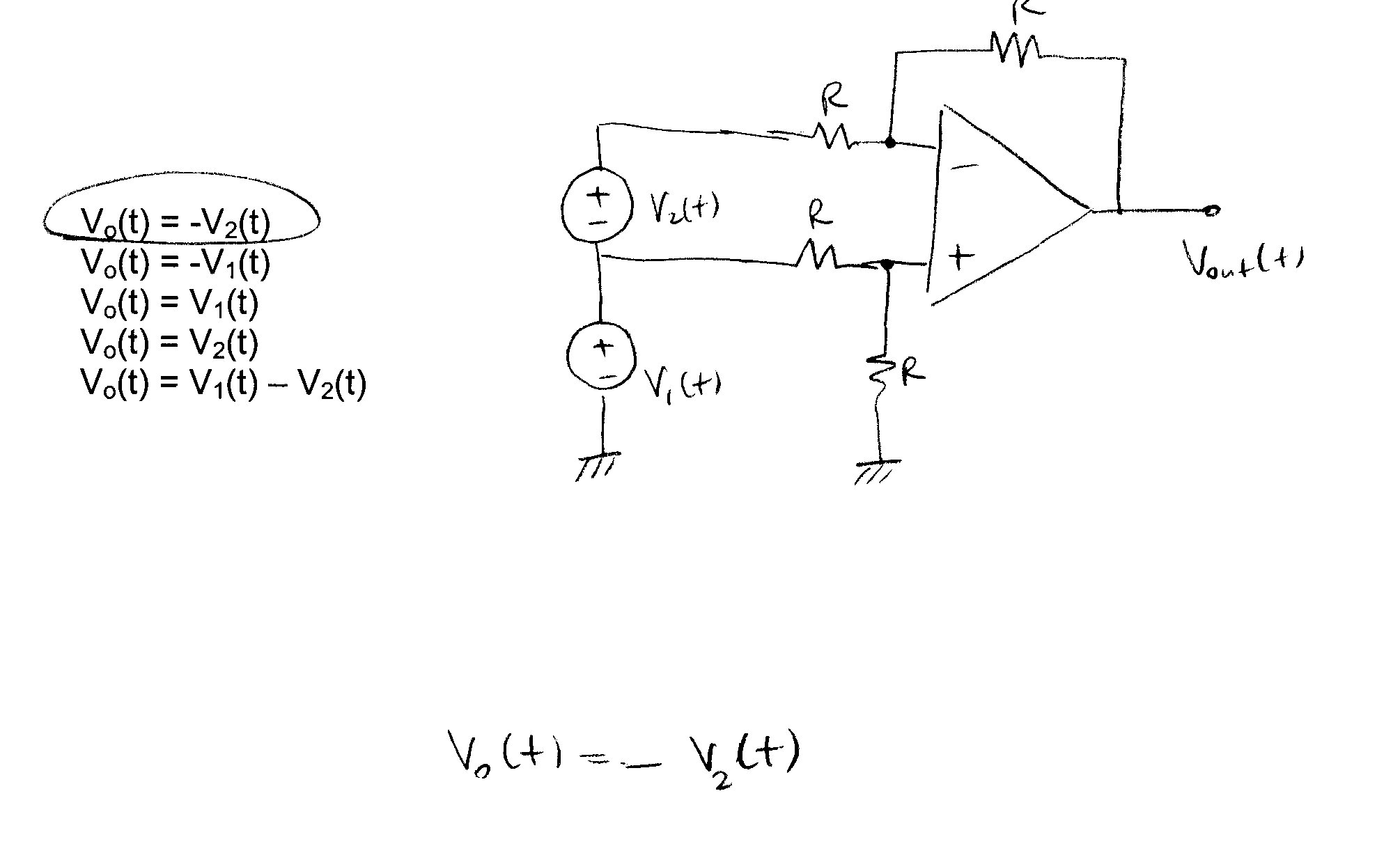![]()
BE 306 BioInstrumentation
Solutions to Exam #2: 3 May 2000, Wednesday
This exam:
TEST FORM CODE:
GOOD LUCK!
QUESTION 1
2 POINTS
![]() A thermistor has a resistance of
A thermistor has a resistance of
You have made a few measurements with this thermistor and get the values seen in the table below:
|
T(oK) |
R(T) |
|
300oK |
2000W |
|
330oK |
1477W |
What is the resistance at 310oK?

QUESTION 2
2 POINTS
We would like to use the thermistor described on the previous problem in a bridge circuit. Assuming that the resistance was 600W at 310oK, which of the following bridge circuits is balanced?

QUESTION 3 (3 POINTS)
We are building an electromagnetic blood flow sensor, with AC magnetic field excitation:
B(t) = Bocos(w ot), w o = 2p ¦ o,
Blood flow is u(t), and the diameter of the blood vessel is d. What is the step response of this sensor?
 (CORRECT)
(CORRECT)




QUESTION 4
3 POINTS
An ultrasound transducer is applied to the patient’s body from outside. Sound travels from the transducer to the bone, is reflected and returns back to the transducer. The distance between the bone and the transducer is 2.5 cm. Sound impedance of the tissue is given as 1/3 of the sound impedance of the bone. Find the ratio between the received pressure wave, P-(0), and the wave sent by the transducer, P+(0).
P(x) = Poe-a x, where a = 0.4 cm-1
(E)![]()

![]()
![]() QUESTION 5
QUESTION 5
2 POINTS
A piezoelectric pressure sensor has an input/output relationship V = gP (V=voltage, P=pressure). We are using a charge amplifier.
What is the transfer function of the system shown below?

QUESTION 6
3 POINTS
What is the output signal from the following circuitry?

QUESTION 7
3 POINTS
An ECG Amplifier is shown below. What is its output?

QUESTION 8
3 POINTS
Assuming that the input/output relationship of the circuit in the previous problem is given by:
Vout(t) = AV1(t) + BV2(t),
What is the CMRR (Common Mode Rejection Ratio)?
QUESTION 9
5 POINTS
We would like to separate the respiratory and cardiogenic components of a transthoracic impedance signal using two filters. Assume that the patient’s breathing rate is 12 breaths per minute, and heart rate is 72 beats per minute. Which one of the filter combinations shown below could be used for this task?

QUESTION
4 POINTS
A successive approximation ADC with 5 bits has a resolution of 10 mV. If the input is 215 mV, show the values in the register of the ADC as it does the conversion from analog to digital.
A)
|
Step |
MSB Bit 4 |
Bit 3 |
Bit 2 |
Bit 1 |
LSB Bit 0 |
|
1 |
1 |
0 |
0 |
0 |
0 |
|
2 |
1 |
1 |
0 |
0 |
0 |
|
3 |
1 |
1 |
1 |
0 |
0 |
|
4 |
1 |
1 |
1 |
1 |
0 |
|
5 |
1 |
1 |
1 |
0 |
1 |
B) (CORRECT)
|
Step |
MSB Bit 4 |
Bit 3 |
Bit 2 |
Bit 1 |
LSB Bit 0 |
|
1 |
1 |
0 |
0 |
0 |
0 |
|
2 |
1 |
1 |
0 |
0 |
0 |
|
3 |
1 |
0 |
1 |
0 |
0 |
|
4 |
1 |
0 |
1 |
1 |
0 |
|
5 |
1 |
0 |
1 |
0 |
1 |
C)
|
Step |
MSB Bit 4 |
Bit 3 |
Bit 2 |
Bit 1 |
LSB Bit 0 |
|
1 |
1 |
0 |
0 |
0 |
0 |
|
2 |
0 |
1 |
0 |
0 |
0 |
|
3 |
0 |
1 |
1 |
0 |
0 |
|
4 |
0 |
1 |
1 |
1 |
0 |
|
5 |
0 |
1 |
1 |
0 |
1 |
D)
|
Step |
MSB Bit 4 |
Bit 3 |
Bit 2 |
Bit 1 |
LSB Bit 0 |
|
1 |
1 |
0 |
0 |
0 |
0 |
|
2 |
1 |
1 |
0 |
0 |
0 |
|
3 |
1 |
0 |
1 |
0 |
0 |
|
4 |
1 |
0 |
0 |
1 |
0 |
|
5 |
1 |
0 |
0 |
0 |
1 |
E)
|
Step |
MSB Bit 4 |
Bit 3 |
Bit 2 |
Bit 1 |
LSB Bit 0 |
|
1 |
1 |
0 |
0 |
0 |
0 |
|
2 |
1 |
1 |
0 |
0 |
0 |
|
3 |
1 |
0 |
1 |
0 |
0 |
|
4 |
1 |
0 |
1 |
1 |
0 |
|
5 |
1 |
0 |
1 |
1 |
1 |